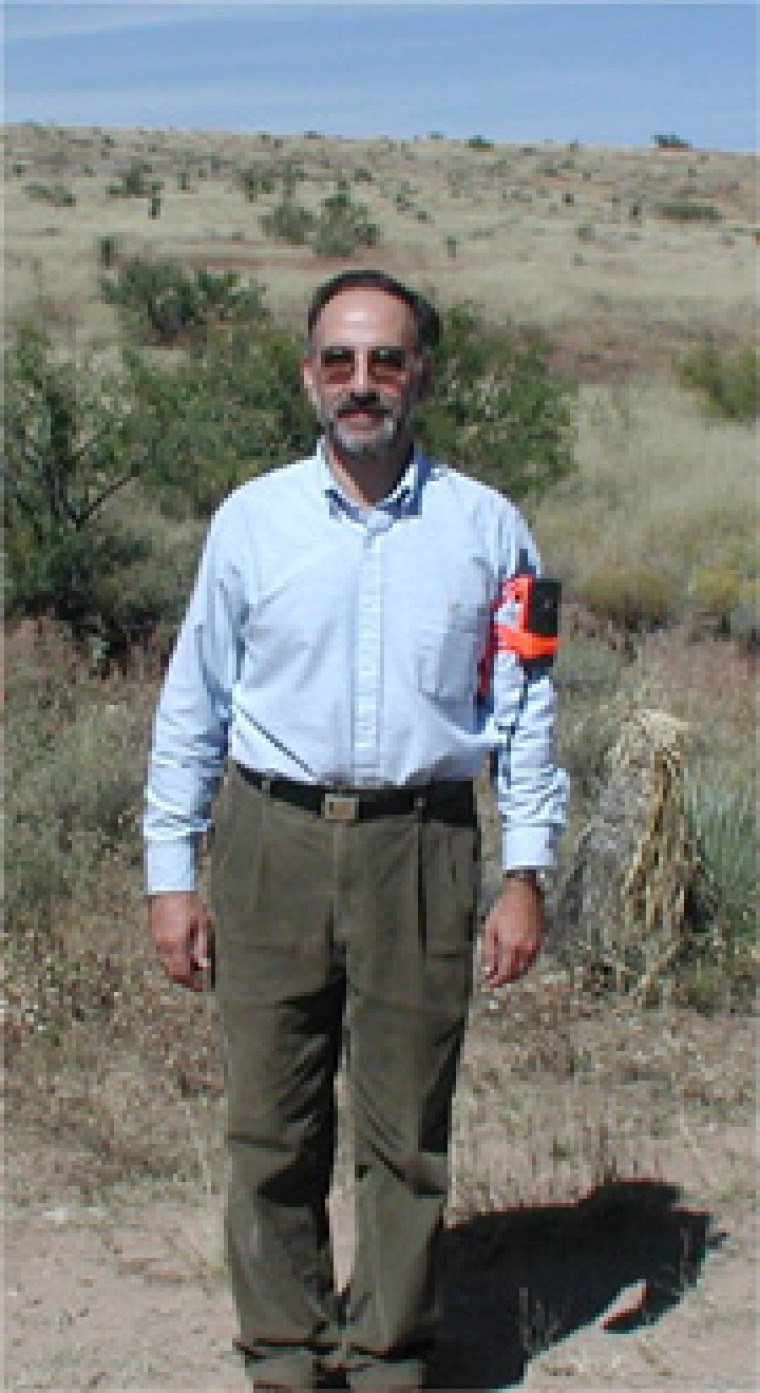David Gonzalez

David Gonzalez, sponsored by the University of Arizona Land Grant/Space Grant Geospatial Extension Specialist Program
I am a graduate student in the Department of Soil, Water & Environmental Science at the University of Arizona. I am working to integrate research associated with assessing soil erosion risk with an outreach program designed to help Cooperative Extension teach small farmers and ranchers about watershed-scale erosion issues. My research involves using multitemporal satellite imagery to improve our ability specify the land cover factor in the Revised Universal Soil Loss Equation (RUSLE). The validation component of my research is being conducted on the Walnut Gulch Experimental Watershed in Cochise County in southeastern Arizona. Adjacent to areas in Cochise County that have been transformed from traditionally grazed rangeland to small ranchettes, Walnut Gulch and its the rich biophysical datasets are ideal for help new land owners understand the implications of land use practices on land cover. My outreach project involves the development of a visual simulation that will help small farmers and ranchers understand the science behind land use change and associated erosion. A secondary objective is to demonstrate how geospatial research and technology can be used by the general public to help in the management of natural resources.
This outreach project is based upon the development of a soil erosion risk model over Walnut Gulch watershed and Cochise County using mathematical model using ground and satellite data. To do this, I have been creating an index to assess the risk of erosion in relation to land use, using our knowledge of weather, topography and soil characteristics, using interrelationships among these factors to define the soil risk.
During the research phase of this project, I have been working mainly with Terrestrial Biophysics Remote Sensing group of the University of Arizona and erosion experts from the Southwest Watershed Research Center of Tucson's USDA-Agriculture Research Service. Having completed the research phase of this project, I will now be working with Cochise County Cooperative Extension agents to apply the knowledge that we got from the first step. I will create a visualization of landscape change using serial time imagery for Cochise County (including Walnut Gulch) using Landsat Multispectral Scanner (MSS) and Thematic Mapper (TM) from 1973 to 2001. I will compliment this with AVHRR from 1989 to date, and if possible, more recent MODIS imagery. While these sensors provide data of much coarser spatial resolution than Landsat, they have many more overpasses over a given year. This will permit a visualization of seasonal changes to help the Cooperative Extension Agents graphically explain the differences between human and climate-induced changes in the landscape. The final phase of this project will be to insert the above facets into a dynamic erosion model with using a Geographic Information System (GIS) and a climate driver.

